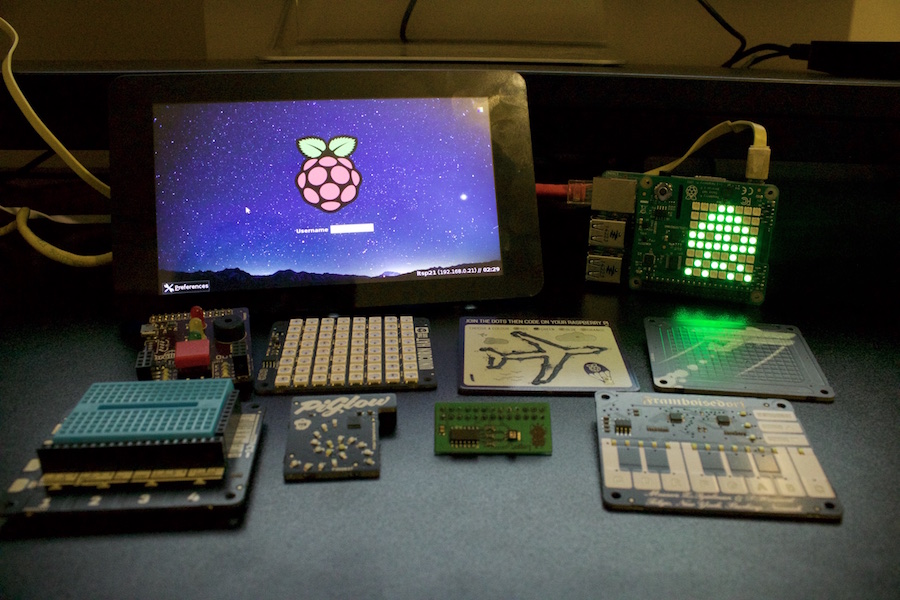PiNet stable release 1.1.0 - The Addon Board Update
23 October, 2015
Since the last stable release of PiNet (1.0.13) back in July 2015, there has been 6 dev channel releases with just under 1000 line changes!
There has also been 17 PiNet site updates, ranging from minor typo fixing to quite a few new pages and screenshots.
What has changed?
There has been a whole stack of new features, improvements of current features and of course, plenty of bugfixes.
To confirm this release of PiNet is still based off Raspbian Wheezy, not Raspbian Jessie (see below for more info).
The biggest changes in this release are
- Newly rewritten additional software installer now based on Python instead of Bash - (1.0.14)
- The awesome new logo created by Amy Mather has been added for new installs of PiNet (more details below) - (1.0.15)
- Full support for the Raspberry Pi Foundation Sense HAT and Raspberry Pi Foundation 7 inch display - (1.0.16)
- Added full support for a number of I2C addon boards including Pimoroni Piano HAT, Explorer HAT etc - (1.0.16)
- Added SD card image generator as an alternative to copying files to the SD card - (1.0.18)
- Added Pygame Zero and gpiozero to be defaultly installed - (1.0.18)
- Added new PiNet metrics system - (1.0.18)
Under the hood, there is also new stuff including updated kernels (now using the 4.1.x branch instead of 3.18.x), a new boot files repository and a new internet connection checker.
The new logo
Back in June I was on the hunt for a new logo for PiNet. The old one used the Raspberry Pi Foundation logo which meant it wasn’t suitable for use in many places.
I happened to be chatting to Amy Mather one evening about the logo and my utter lack of artistic skills.
She very kindly offered to give it a go and within a few hours, we settled on the awesome new logo below.
![]()
I am sure everyone will agree it is a pretty awesome logo, huge thanks to Amy for taking the time to put it together.
Addon boards
This stable release of PiNet brings with it support for many I2C based addon boards. The full list of supported boards can be found here.
Where is Raspbian Jessie?
Jessie for PiNet is currently being worked on. PiNet builds a full Raspbian OS package by package each time it is installed. This is due to the fact it is a requirement for LTSP.
This means we don’t use the Raspberry Pi Foundation provided SD card images so after each major Raspbian update, we have to go through the update logs and add any changes to PiNet.
Jessie is a huge update… There is a lot of changes with many many new package updates and features. Each of these needs to be thoroughly tested before reaching the stable channel.
This process can take a few weeks and unfortunately we heard at the same time as everyone else on the Jessie release, it came as a surprise. Given this update was already nearly finished and mainly in testing, we have pushed back the Jessie update to PiNet for the next release.
You can of course be trying the dev channel builds by switching over inside the “Other” menu by selecting “Release Channel”.
How can I update?
Make sure your PiNet server is connected to the internet, then launch the PiNet application from the desktop. It will check for updates on startup and notify you there is an update available. When it asks if you would like to update, hit yes and it will automatically install the update.